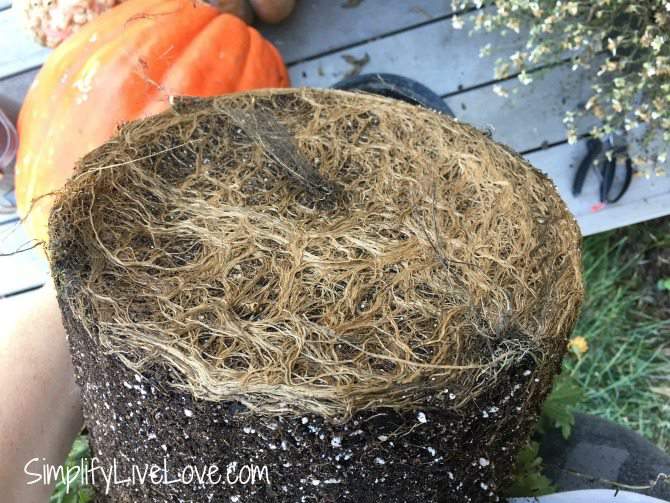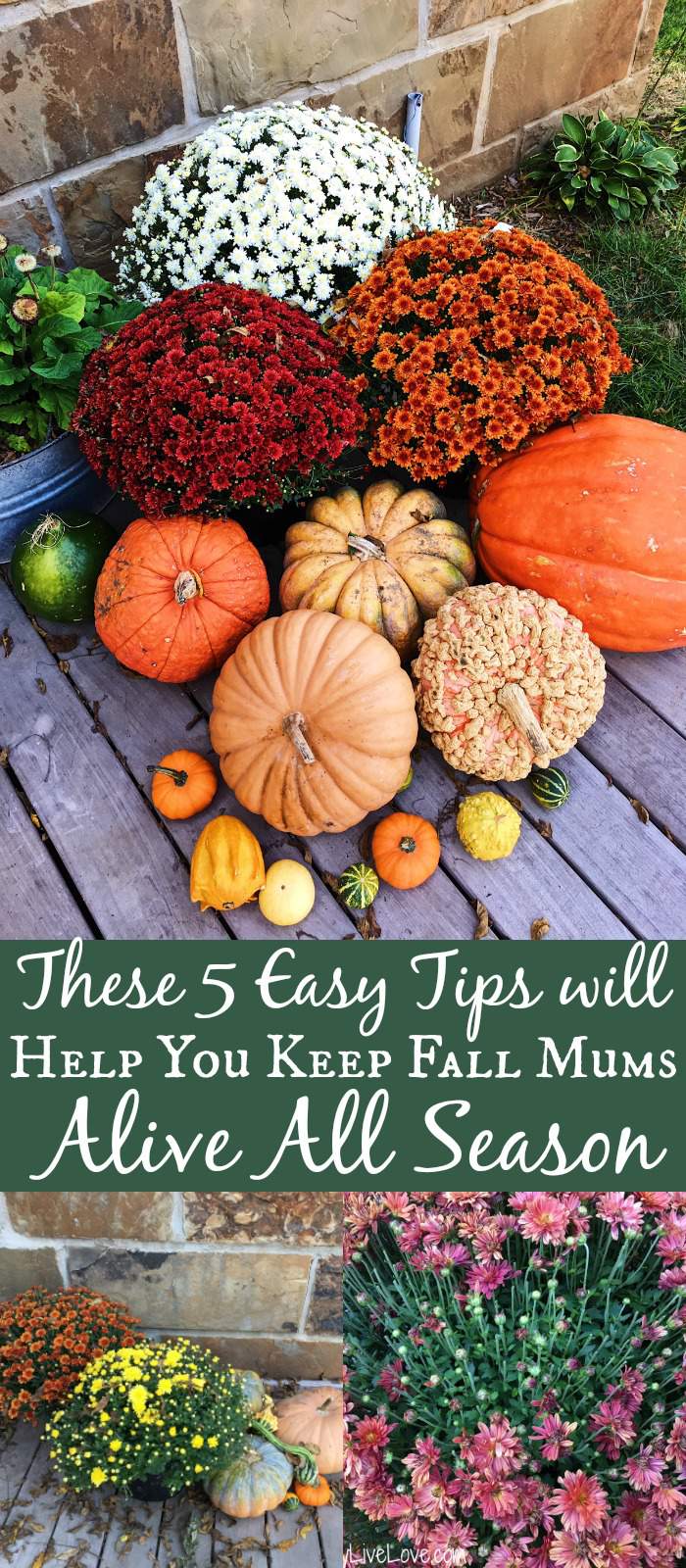Why Mums Die So Quickly (and the Odd Tricks That Keep Them Blooming)
on Sep 20, 2025
This post may contain affiliate links. Please read our disclosure policy.
Why do fall mums seem to fade almost as soon as you bring them home? These cheerful blooms are the symbol of autumn, yet they rarely survive long enough to see the first frost. The truth is, most store-bought mums are already on borrowed time. They’re greenhouse-grown, forced to bloom early, and sold rootbound in undersized pots. By the time you set them on your porch, they’re stressed and nearly spent.
But that doesn’t mean you’re powerless. With a few odd tricks, you can stretch their lives past Halloween and even help them return year after year. Here’s how to outsmart the short lifespan of fall mums.

What Are Mums?
Mums, short for chrysanthemums, are a popular perennial flower known for their dainty, stunning, and plentiful blooms. Mums come in a wide range of colors, shapes, and sizes which make them a gardener’s favorite. Mum plants often refer to two categories: garden mums and florist mums.
💡 Did You Know?
Chrysanthemums were first cultivated in China more than 3,000 years ago. They were prized for their medicinal properties and later became a symbol of longevity in Japan.
In some European countries, chrysanthemums are linked with funerals and remembrance, which is why they’re often seen as “flowers of death.” In the U.S., though, they’re all about pumpkin-spice season.
How to Care for Mums in the Fall
I love decorating with fall mums, especially on my front porch. While everything else is turning brown mums retain their cheerfulness to celebrate the fall season. The fall flowers last a long time and look gorgeous in pots and landscapes. Like most things in life, a little effort will keep your mums looking their best all season long!

Pot Mums in the Correct Pot
That pot your mums came in? It’s one of the main reasons they die so quickly. Roots are crammed together, soil dries out too fast, and there’s no room for the plant to thrive.
If you want your mums to last, repot them immediately in a larger container with fresh soil. It’s a simple step most people skip—but it makes all the difference.
How Long Do Potted Mums Last?
Potted mums can live from several weeks to potentially several years. Your care routines, growing zone, and weather all impact their lifespan. Following the tips in this post will help you extend the full bloom season.
Planted mums are generally treated as perennials and can last for years in your garden beds. They are quite hardy but mums grow best when they receive proper care.
Pin this now to find it later
Pin It
Best Location for Potted Mums
Location, Location, Location! It’s true for real estate and it’s true for keeping mums alive, too. Mums need at least six hours of sunlight a day (full sun). Place your pots of mums in an area with plenty of direct sunlight to encourage growth and colorful blooms.
As the seasons change, the days become shorter. The place you chose for mums in the spring may no longer be sunny. You may need to move your fall mums to a new location in the fall to capture the sun.
Mums are hardy, but they do appreciate protection as well. Choose a location with some shelter from strong winds or extreme temperature changes. This will help them survive the winter.
If you have pets, keep your mums away from their favorite sleeping spots. Mums are wonderful plants, but they are considered toxic to dogs, cats, and horses.
Keep your pots in an accessible location. They are low-maintenance but that doesn’t mean no maintenance. Place the mums where you can easily reach them for deadheading and watering.
Also, take into account drainage. Proper drainage is crucial to prevent waterlogged soil, which can lead to root rot. Elevate your pots slightly or use pot feet to ensure water can escape freely from the bottom.
With the right location, your potted mums will thrive and provide a beautiful display of fall color.

How Much Water do Mums Need?
The most common mistake is treating mums like pumpkins—set-and-forget décor. Their shallow roots dry quickly, especially in windy fall weather.
The fix: water deeply every day or two, especially if they’re in pots. Place your finger in the soil—if it’s dry an inch down, water right away. Avoid overhead watering that drenches flowers; aim for the base instead.
How much water is enough but not too much? That’s the million dollar question. Make sure the dirt stays moist, but not drenched. 😉
Overwatering leaves extra moisture in the soil which leads to root rot and eventual death of your mums. Make sure your pot has good drainage holes. Use pot feet to keep the pot itself off the ground for extra drainage if needed.
Underwatering leads to stress and wilting. The mum will revive once watered, but blooms might be delayed or won’t appear at all.
Check the pot’s moisture level regularly. Stick your finger about an inch into the soil; if it feels dry at that depth, it’s time to water. Water the base of the plant rather than the foliage to prevent any fungal diseases.
Monitor your potted mums frequently and adjust watering schedules accordingly. The appropriate amount of water is one of the very best ways to keep your mums alive and blooming.
Do Mums Need Deadheading?

Ah, deadheading. . . [insert groan here]. I know deadheading is no fun. If you want your mum to re-flower – you have to get rid of the spent blooms first. This encourages the mums to put energy into more flowers rather than producing seeds.
Deadheaded mums also just look better. No one wants to see dried up old flowers in a pot. Dead flowers also attract garden pests. Make deadheading a part of your regular gardening routine and soon you’ll stop dreading it.
Grab a trusty pair of snips and cut away while listening to your favorite music or chatting with a dear friend. Or just use your fingers. Honestly, I think the easiest way to deadhead mums is just to pinch off the dead flowers with my fingers.
Snip the dead flowers all the way down to the nearest set of healthy leaves or buds. Make the cut at a slight angle if possible. Be careful when deadheading mums as the new baby buds might be lurking under the dead flowers.
I try to deadhead my mums every 1-2 weeks to keep them looking good. It’s a simple step that really pays off with beautiful flowering mums.
Will Frost Kill Mums?
Mums are hardy but, like any plant, will eventually succumb to cold weather. Although a simple frost won’t kill them, it’s best to protect them from serious bouts of cold.
Watch the forecast for any extended cold periods. Bring your potted mums in overnight to avoid hard freezes. Return them to their sunny location outside once the temperature is above freezing.
If your mums have to be inside for a few days, place them near a window. Natural light is important for mums! Continue monitoring the water.
Cover your mums with a thick blanket to keep some of the heat around the plants during a lighter frost.
Protecting mums from the cold will lengthen their lifespan, ensuring you have blooms long into the autumn.

How to Clean Up Mums for Winter
Now that you extended the life of your mums, it’s time to clean them up for the winter. This step is important as it gives them a head start to health the following growing season.
Allow the mums to naturally shed their leaves and to turn brown. Once they are dormant, cut the stalks 2-4 inches above the soil. This removes the dead parts of the plant and gives lots of room for new shoots in the spring.
Add a layer of mulch at the base of your plant for added protection. It also helps retain moisture and protect the roots.
To keep mums alive and thriving follow those 5 strategies choose a sunny location and a large pot. Monitor moisture levels throughout the blooming season and deadhead to keep the flowers coming. Protect them against deep freezes and frosty conditions.
Mums are a dazzling addition to fall decor. Follow these guidelines to not only keep your mums alive but to keep them vibrant and healthy as well. What are your favorite colors of mums or ways to decorate with mums? Be sure to share your tips, too!
More Fall Gardening Posts You’ll Love
- Tips for decorating for fall
- How to start a fall vegetable garden now
- How to cover a raised garden bed to extend your growing season
- 15 Fall gardening tasks
- Types of heirloom garlic to plant this fall
- Fun ways to decorate pumpkins without carving















Thank you! This helped me and my husband out quite a bit! We left our mums out in the pouring rain for like 3 days, then decided to bring them into the garage because they were looking very sad! It ended up raining for 7 more days! They would have died for sure if we had not brought them in. We now know that rain will steal their color and make it easy to get root rot. Mums are beautiful! We love them… but like everything else in life that is precious, they need special love and attention – knowledge is power, and we appreciate all the good information you have provided – including about the deadheading! 🙂
what is deadheading?